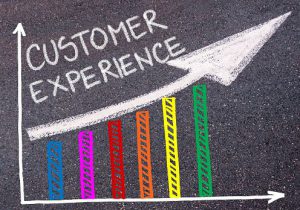McDonald’s Milkshakes
McDonald’s had a problem.
They weren’t selling enough milkshakes.
You’ll soon discover, that wasn’t actually the problem. That’s what McDonald’s found out when it hired a team of researchers to figure out why milkshake sales were slumping. The researchers tackled the issue from all angles, and they eventually restated the problem from a consumer-focused perspective.
McDonald’s was selling milkshakes; customers just weren’t buying enough of them.
But, as it turns out, that wasn’t the problem either. It was a symptom of the problem. According to a research article from the Harvard Business School, it took the insight of one researcher to pinpoint the root cause of the issue that McDonald’s was facing.
McDonald’s milkshakes weren’t solving customers’ problems.
Here’s the Whole Story
McDonald’s wanted to improve milkshake sales, so the brand hired a team of researchers to figure out why. The researchers tested every aspect of the shakes – the temperature, the viscosity, the sweetness. They wanted to make the perfect McDonald’s milkshake. If they could create the best milkshake on the market, sales would certainly rise.
But it didn’t work. It didn’t matter how thick or creamy or sugary the milkshakes were. That wasn’t the point.
According to the Clay Shirky book titled, Cognitive Surplus: How Technology Makes Consumer into Collaborators, one researcher, Gerald Berstell, decided to ignore the product, and instead focus on the customer. He sat in a McDonald’s for 18 hours one day, and made a note every time a milkshake was sold.
Here’s what he found:
- A disproportionate number of milkshakes were sold before 8:00 a.m.
- The people who bought milkshakes were almost always alone.
- They almost never bought anything other than a milkshake.
- They almost never drank the shakes inside the restaurant.
The next day, when he saw the same pattern emerging, he started interviewing customers and discovered something surprising.
Improving Customer Experience
The number-one reason customers bought milkshakes had nothing to do with the taste, viscosity, or temperature. Customers bought milkshakes to make their morning commutes more interesting.
People wanted to hold something in their free hand while they drove. They wanted it to last the whole way on their drive to work. And they wanted it to help stave off hunger until lunchtime.
Based on the voice of the customer, Berstell suggested a few small changes to help McDonald’s meet customers’ needs and requirements and sell more milkshakes:
- Make the milkshakes thicker (so they last for the entire drive to work).
- Add tiny chunks of fruit to certain shakes (to make the shake consumption less predictable and more interesting for commuters).
- Set up a milkshake dispensing machine in-store, away from the usual retail counter (so commuters could swipe a card, fill a milkshake cup, and leave without waiting in line and being late for work).
None of these changes were about improving the product. Instead, they were about improving the customer’s experience with the product.
That’s the goal of a Six Sigma principle called the Kano Model.
The Kano Model
The Kano Model was created by Japanese academician Noriako Kano in the 1980s (as a way to devise new features and products through customer-centric thinking), and it has three primary parts.
- Basics and Must-Haves – a product must meet a few basic requirements if you expect people to buy it. It must be in-stock, for example. It must be priced competitively.
- Performance – a product must differentiate itself from others on the market through its performance. Once Berstell understood what consumers were looking for in milkshakes, he knew how to upgrade their performance: make it last longer, stave off hunger and be more interesting than other types of breakfast foods commuters might find on their way into the office.
- Excitement – a product must engender excitement in its consumer base, and the best way to do that is by emphatically solving customer problems. Now, people were already excited about food from McDonald’s. The fast food brand didn’t have to do any extra advertising to bring people in-store. All they had to do was make the process of following through on that excitement as quick and easy as possible.
When used effectively, the data-driven methodology of Six Sigma stops you from overthinking and overdesigning solutions to problems. Using models like Kano’s, you can get straight to the heart of consumer desire, refine your product to appeal to your consumer base, and give your customers exactly what they’re looking for.



